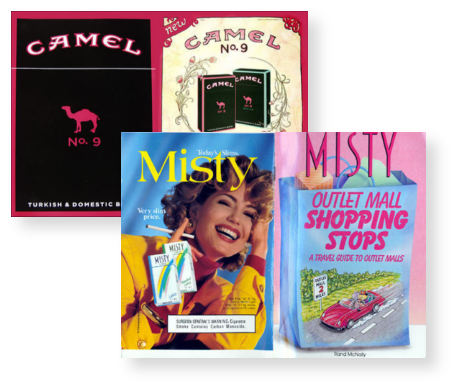According to the CDC, “marketing toward women is dominated by themes of social desirability, empowerment, and independence.”1 For example, these ads focus on skinny, fit, and athletic models. Tobacco marketing towards women also focuses on physical appearance, how smoking can make them thin, and oftentimes how smoking can help them attract men.2,3
Tobacco marketing towards women also focuses on physical appearance, how smoking can make them thin, and oftentimes how smoking can help them attract men.2,3